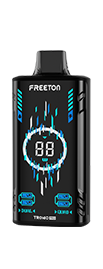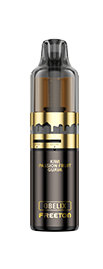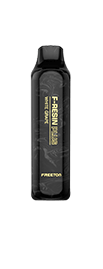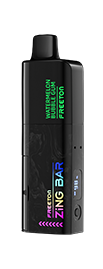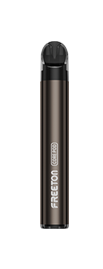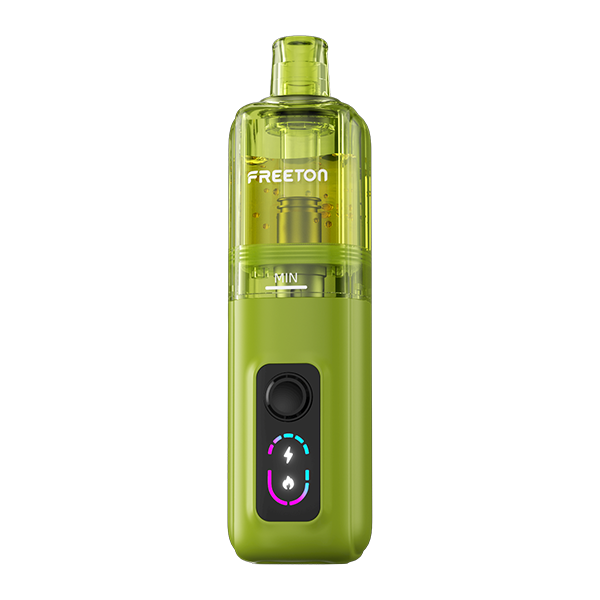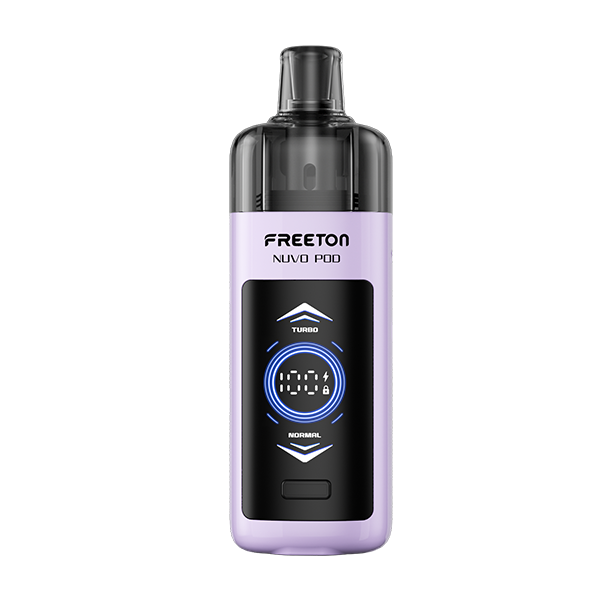
Vaping is an amazing alternative to traditional smoking. Many people see its effects on their lives and are inspired to make the change. However, some don't know the history of vaping and how it came about. That's why I'm here today to tell you the history of vaping.
Vaping is an amazing alternative to traditional smoking. Many people see its effects on their lives and are inspired to make the change. However, some don't know the history of vaping and how it came about. That's why I'm here today to tell you the history of vaping.
1. When did vaping begin?

Vaping has been around for a long time. But it wasn't until the early 2000s that e-cigarettes entered the market and began to gain popularity among smokers.
The first commercial e-cigarette was developed in 2003 by Hon Lik, a Chinese pharmacist who created it as an alternative to smoking tobacco cigarettes. He patented his invention in 2004, and it hit store shelves in 2006 as Ruyan (meaning "similar to smoking"). The product was originally manufactured by Golden Dragon Holdings Ltd. but later sold to Ruyan Group Co., Ltd., which still makes most of the e-cigarettes sold today.
More than 350 brands of e-cigarettes are now available worldwide — including more than 200 in the U.S.
1927: Joseph Robinson
Robinson was a pharmacist and a tobacco aficionado. He developed a device that would heat an odorous liquid made of water, glycerin, and nicotine until it vaporized. The first e-cigarette was patented in 1927, but it didn't gain widespread popularity until the 1960s.
1963: Herbert A Gilbert
In 1963, Herbert A Gilbert patented the first e-cigarette. The patent was for a device that delivered nicotine without burning tobacco.
Gilbert's invention was never produced commercially, but it did lay the groundwork for future developments in e-cigarettes.
Gilbert's patent described a battery-powered device with an atomizer and sealed cartridge filled with liquid nicotine. When you sucked on the device, it heated the liquid and turned it into a vapor that could be inhaled.
Gilbert was not familiar with e-cigarettes when he filed his patent. He was trying to invent a safer way to smoke by eliminating secondhand smoke and reducing the risk of lung cancer associated with smoking cigarettes.
The 1980s: Phil Ray
The inventor of the electronic cigarette was Phil Ray.
In the 1980s, Ray had a heart attack and was looking for a way to stop smoking. He thought he could invent a device that would simulate the act of smoking without the harmful chemicals in tobacco. In 2003 he received his first patent for an electronic cigarette. He founded R.J. Reynolds Vapor Company and began selling e-cigarettes in convenience stores a year later.
Ray also invented the Smokeless Cigarette, which allowed users to inhale nicotine vapor instead of smoke from burning tobacco leaves. The FDA approved it as a cessation device in 2008, making it the first nicotine delivery device approved by the agency since 1976, when it banned cigarettes with low tar and nicotine content ("low tar" cigarettes were considered safer than those with high tar content). However, due to health concerns about nicotine addiction and secondary aerosol emissions from e-cigarettes, many countries banned their sale and distribution (Frieden & Siegel).
2001: Hon Lik
Hon Lik: the man who invented vaping
Hon Lik is the Chinese pharmacist who invented the first e-cigarette in 2003. He was born in 1952 in the city of Liaoyang, China. At the age of 18, he went to study at the Pharmacy College of Liaoning Medical University in Shenyang, where he graduated with a doctorate.
Hon Lik began his career as a researcher at the National Tobacco Industry Technology Institute (TNIT) in Beijing. He then became Chief Scientist at TNIT's research center in Shenzhen in 1992.
In 2003, Hon Lik created a device to help smokers quit smoking using vaporized nicotine solutions instead of tobacco products. His invention was patented under the name Ruyan (literally "resembling smoke"), which was later changed to Ruyan Vein Limited Company (now known as Dragonite International Limited). The company was established on April 24, 2004, by Hon and other investors from Hong Kong and Singapore. Its main activity is designing and manufacturing electronic cigarettes.
2. History of improvements in electronic cigarettes

2003—2008: acceptance and controversies
Electronic cigarettes were introduced in 2003 by Hon Lik, a pharmacist in China. His idea was to create an alternative to smoking using a battery-powered device that vaporized a liquid solution containing nicotine. Later that year, he patented his invention as a "smokeless non-tobacco cigarette." In 2006, the company he founded, Dragonite International Limited, renamed itself Ruyan ("Like smoke") and began exporting its products internationally.
In 2008, the Electronic Cigarette Association (ECA) was formed in the United States. This organization attempted to establish itself as a trade group for electronic cigarette manufacturers and vendors. The ECA attempted to force its way into regulatory debates on electronic cigarettes. Still, it could not gain traction with the FDA or other agencies because it was not legally recognized as a trade group.
2009—2012: a boom in sales
Electronic cigarettes are a booming business. In 2009, sales were just $20 million; by 2012, they were $1.5 billion. The industry is still small compared to traditional tobacco companies, but it's growing fast.
The first electronic cigarettes were invented in China in 2003 by Hon Lik, who was looking for a safer way to smoke after his father died of lung cancer. The devices deliver nicotine in water vapor rather than through smoke, making them less harmful than regular cigarettes.
Many e-cigarettes look like traditional ones — some even come with liquid nicotine — but others are more elaborate: some e-cigarettes look like pipes or cigars, and others resemble USB drives or MP3 players.
Some experts believe that the surge in sales is due to people switching from traditional cigarettes because they want a less harmful alternative; others say the trend is driven by young people who prefer something more modern than traditional tobacco products.
2012—2014: The e-cigarette reaches a critical mass
The e-cigarette is a product growing in popularity over the past few years. It seems that this trend will continue. This is simple: these devices provide smokers with an alternative way to consume nicotine. In addition to that, they also offer many other benefits, such as cutting down on health risks and cleaning up your finances.
So how did things get to this point? Let's take a look at how the e-cigarette has evolved over the last few years:
2012 was the year when electronic cigarettes started becoming popular among smokers worldwide. This was when restrictions on their use were lifted in many countries, allowing people to purchase them from convenience stores or online retailers legally. The first generation of e-cigarettes was rather primitive than what we have today (we will talk more about this later). However, they still managed to catch on quickly because they provided something that traditional cigarettes didn't – an alternative source of nicotine.
In 2013, more devices were available on the market, and researchers and scientists did more research on them. Now more brands are offering their products.
The e-cigarette reached a critical mass in 2014, with sales increasing by more than 30% year on year.
The e-cigarette market is growing fast and will reach an estimated $1bn in sales by 2014. The market is growing at a rate of 33% per month, compared with traditional cigarette sales, which are decreasing steadily.
The e-cigarette has become a safer alternative to traditional cigarettes, which has led to it becoming popular among smokers trying to quit or cut down on their nicotine intake.
Some experts believe that the e-cigarette can help smokers quit altogether by gradually easing them off the habit. These experts claim that smokers who use e-cigarettes find it easier to give up smoking because they can still enjoy their nicotine hit without dealing with all the other health risks associated with tobacco products.
Electronic cigarettes are a relatively new phenomenon in the United States. Still, they're already having a major impact on the tobacco industry.
In 2015—present-day: Mainstreaming of the electronic cigarette, e-cigarettes have become more popular than traditional cigarettes in the United States.
Current safety concerns about electronic cigarettes
Electronic cigarettes are a relatively new product, and the health and safety of their use are not yet known.
Some of the safety concerns about electronic cigarettes include:
Nicotine poisoning: Nicotine is a highly toxic substance that can cause serious injury or death if swallowed. Nicotine poisoning can occur if young children are in contact with the liquid nicotine used in e-cigarettes or if they are exposed to secondhand vapor from e-cigarettes.
Secondhand vapor: The vapor from electronic cigarettes contains nicotine, ultrafine particles, carbonyls, and volatile organic compounds (VOCs). Some of these components may be harmful to human health. There is no evidence that secondhand vapor contributes to passive smoking risk or harms bystanders' health.
E-cigarette explosions: E-cigarettes have caused fires and explosions when charged improperly or with incompatible chargers. In some cases, the device exploded while being used by the consumer. Since 2015, there has been an increase in reports of e-cigarette explosions from both media sources and fire services across Canada.
What are the components of an electronic cigarette?

The components of an electronic cigarette are:
Battery: The battery powers the atomizer and heats the liquid inside it to produce vapor. The battery also acts as a power source for other components like the LED lights on some models.
Atomizer: The atomizer comprises a heating coil that warms up the e-liquid to create vapor. The atomizer is screwed onto the battery and can be replaced when it stops working.
Cartridge: The cartridge contains the e-liquid that gets vaporized by your e-cigarette. Some cartridges are disposable, while others are refillable. You can refill them with more e-liquid instead of replacing them completely.
LED Light: Some electronic cigarettes come with LED lights that light up when you take a drag on your device. These lights make it look like there's smoke coming out of your mouth which gives you an authentic smoking experience!
Regulations on e-cigarettes
Vaping and the Law in the United States
In the U.S., it's illegal to sell e-cigarettes or e-juice to minors under 18 years old. Many places have banned vaping indoors, including restaurants, bars, and public spaces like airports. Other places allow it: some states have laws that allow people to vape inside their homes and cars, while many others allow people to vape outside their homes (but not inside).
What are the UK regulations on vaping?
The UK regulations on vaping are the same as those for tobacco products. The Tobacco Products Directive (TPD) was introduced in May 2016 and applied to all products with nicotine, including e-liquids, devices, and batteries.
The TPD bans advertising of e-cigarettes and e-liquids, restricts their sale to minors, requires manufacturers to provide safety warnings on packaging, and prohibits specific ingredients such as diacetyl.
There is also a requirement for manufacturers to have a safety certificate from an independent regulatory body such as the British Standards Institute (BSI).
What's more, if you're based in the UK, there are restrictions on how much nicotine can be in your e-liquid – no more than 20mg per ml.
What are the laws and regulations about vaping in Australia?
The use of e-cigarettes is regulated in Australia by the Therapeutic Goods Administration (TGA). The TGA administers the Poisons Standard and Tobacco Products Regulation.
The sale of nicotine in Australia is regulated by state and territory law. In Victoria, for example, it's illegal to sell nicotine products to anyone under 18 years of age.
In most states and territories, it's also illegal to smoke e-cigarettes in the same places as tobacco cigarettes. This includes:
public transport and public places;
shopping centers;
restaurants;
And pubs or bars.
There are restrictions on where you can vape (vape). For example, in NSW, it's illegal to vape in a car with someone under 16 years old present.




